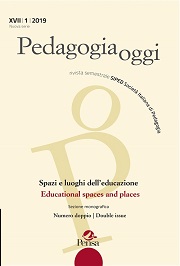Primary education: physical and temporal spaces and environments for physical education
Abstract
Today’s children have a great need for both quantitative and qualitative movement
opportunities to avoid the detrimental effects of unhealthy eating and physical inactivity
(e.g. hypokinesia) as well as so-called ‘motor illiteracy’. Global recommendations such as
those proposed by the World Health Organization (WHO) suggest that children and
adolescents should undertake at least 60 minutes of moderate-to-vigorous physical
activity (MVPA) per day in order not only to reap physical and mental benefits but also
to encourage the development of social, relational, moral and self-controlling behaviours.
This paper aims to identify strategies to achieve these objectives and accordingly, to take
stock of the situation regarding the opportunities for physical activity, which can be
accomplished by the appropriate planning and organization of both physical
environments (e.g. classrooms, gyms, natural spaces) and in-school curricular and noncurricular
time. In order to promote active lifestyles in children and adolescents, primary
schools should not limit their educational effort and action to curricular moments in the
gym (e.g. physical education hours) but, in addition, should revise and reconsider the
environments, intervals and transport methods used between home and school.




